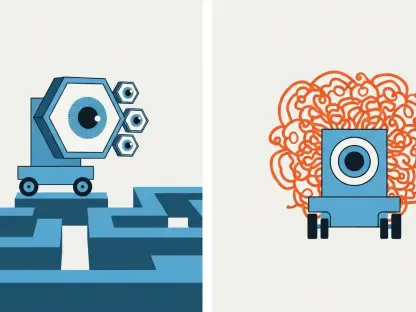In an era where the media landscape shifts at breakneck speed, journalists face immense pressure to produce high-quality content under tight deadlines and often with limited resources, making the emergence of artificial intelligence (AI) a transformative opportunity. Low-cost or even free AI tools can significantly enhance productivity, acting as virtual assistants to help newsrooms and independent reporters streamline repetitive tasks, allowing more time for in-depth storytelling and investigative work. From transcribing lengthy interviews to crafting engaging multimedia content, AI is proving to be a vital ally in modern journalism. This shift not only saves time but also opens doors to creativity, enabling journalists to focus on the heart of their craft. As the digital age continues to evolve, embracing such tools becomes less of an option and more of a necessity for staying relevant and competitive in a crowded field. This exploration delves into the practical applications of affordable AI solutions, shedding light on how they can reshape workflows for the better.
Exploring AI Categories for Journalism
Transcription Tools for Effortless Documentation
The ability to quickly convert audio from interviews or press conferences into text is a game-changer for journalists juggling multiple stories. Tools like Otter.ai, Whisper by OpenAI, and Google Recorder stand out in this domain with their accessible features. Otter.ai, for instance, offers 300 free minutes each month and seamlessly integrates with video conferencing platforms to provide real-time notes and speaker identification. This functionality proves invaluable during live events or remote interviews, cutting down on manual transcription time. Meanwhile, Whisper excels with its multilingual support and offline capabilities, ensuring journalists can work even in areas with poor connectivity. For those using Pixel devices, Google Recorder brings offline transcription and keyword search features to the table, making it easier to revisit specific parts of a conversation without sifting through hours of audio. These tools collectively address a critical need for speed and accuracy in documentation.
Beyond the basic conversion of speech to text, transcription tools are evolving to cater to the nuanced demands of journalism. The integration with platforms like Zoom or Google Meet means that journalists can capture discussions in real-time, reducing the risk of missing key details during fast-paced exchanges. Otter.ai’s ability to distinguish between speakers adds another layer of convenience, especially for group interviews or panel discussions where tracking individual contributions is essential. Whisper, on the other hand, supports a broad range of languages, which is a boon for reporters covering international beats or working in multilingual environments. Google Recorder’s keyword search further enhances efficiency by allowing users to pinpoint exact moments in a recording, a feature that saves precious time during tight deadlines. While these tools are powerful, it’s critical to review their outputs for errors, as automated transcription can sometimes misinterpret context or accents, potentially leading to inaccuracies in reporting.
Translation Tools to Break Language Barriers
In a globalized news environment, the ability to navigate language barriers is essential for journalists aiming to cover stories beyond their native tongue. Google Translate and DeepL emerge as leading low-cost solutions in this space, each offering unique strengths. Google Translate is renowned for its versatility, supporting multiple input methods such as text, speech, and even images, alongside an extensive range of languages. This makes it an indispensable tool for reporters on the ground who need to interpret signs, documents, or live conversations in real time. DeepL, while covering fewer languages, focuses on delivering more nuanced and contextually accurate translations, which can be crucial for maintaining the integrity of sensitive quotes or cultural references. With paid plans starting at just $8.74 per month, DeepL remains within reach for most budgets, ensuring accessibility for freelancers and small newsrooms alike.
The practical applications of translation tools extend far beyond simple word-for-word conversion, offering journalists a way to engage with diverse sources and audiences. Google Translate’s ability to handle image-based text, such as scanning a foreign-language press release or menu, allows reporters to quickly gather context without relying on external help. This feature is particularly useful during international assignments where time is of the essence. DeepL, meanwhile, shines in scenarios requiring precision, such as translating official statements or academic papers, where tone and intent must be preserved. Both tools enable journalists to expand their reach, connecting with stories and communities that might otherwise remain inaccessible due to linguistic divides. However, caution is advised when using automated translations for critical content, as subtle errors or cultural misinterpretations can skew meaning, underscoring the importance of human oversight to maintain credibility in reporting.
Multimedia Content Creation with AI
Dubbing and Video Editing for Engaging Stories
As video content becomes a cornerstone of digital journalism, tools for dubbing and editing are gaining prominence among reporters seeking to captivate audiences across platforms. Dubbing solutions like Dubverse and Heygen address the need for multilingual video localization, making content accessible to global viewers. Dubverse supports over 60 languages with synthetic voices and features like lip-syncing for a natural viewing experience, while Heygen focuses on high-quality video generation with avatars and voice cloning capabilities. Both offer free basic plans, with paid options ranging from $9 to $29 per month. For video editing, a robust lineup including Lumen5, Invideo, Pictory, Wisecut, CapCut, and Veed.io transforms raw footage or written content into polished, social media-ready clips. With most providing free versions and affordable paid plans between $9.99 and $28 per month, these tools ensure professional-grade output without straining budgets.
The significance of video content in journalism cannot be overstated, especially as platforms like Instagram and TikTok demand short, engaging formats to capture attention. Tools like Lumen5 stand out by converting articles or scripts into branded videos, complete with visuals and transitions, saving hours of manual editing. Invideo offers customizable templates tailored for social media, while Pictory and Wisecut excel at repurposing long-form content into concise snippets ideal for quick shares. CapCut and Veed.io further enhance accessibility with user-friendly interfaces and AI-driven features like automated subtitling and text-to-speech, ensuring videos are inclusive and engaging. Dubbing tools complement this by breaking down language barriers, allowing a single piece of content to resonate with diverse audiences worldwide. While these technologies streamline production, journalists must verify the accuracy of AI-generated elements like subtitles or dubbed voices to avoid miscommunication or loss of authenticity in their storytelling.
Voice and Image Generation for Creative Output
Audio narration and visual elements play a pivotal role in modern journalism, and AI tools are making these aspects more accessible through voice and image generation. Voice synthesis platforms like Play.ht, ElevenLabs, and Artlist cater to the need for consistent, professional narration in podcasts, documentaries, or news segments. Play.ht and ElevenLabs allow customization of AI voices with adjustable tones and styles, while Artlist provides a library of voices paired with background music for added depth. With pricing as low as $5 per month for ElevenLabs and free trials across the board, these tools fit tight budgets. For visuals, image generation tools such as Leonardo.ai, Ideogram, and Playground enable the creation of illustrations, logos, and stylized graphics, perfect for fast-breaking news or editorial content. Free access and paid plans starting at $7 per month ensure affordability for all.
The creative potential of these tools extends into how stories are told and perceived by audiences, adding layers of professionalism without requiring specialized skills. Voice generation platforms offer a way to maintain a consistent auditory brand, especially for outlets producing regular audio content, as they eliminate the need for expensive voice actors. The flexibility to tweak pitch or emotion in tools like ElevenLabs ensures the narration matches the tone of the story, whether it’s somber or upbeat. On the visual front, tools like Leonardo.ai can generate detailed artwork or infographics in minutes, supporting journalists who need compelling imagery to accompany breaking news. Ideogram and Playground further allow for experimentation with styles, ensuring visuals align with editorial vision. While these innovations save time and resources, it’s crucial to double-check outputs for appropriateness and accuracy, as AI-generated voices or images may occasionally miss cultural nuances or factual precision, requiring human judgment to uphold journalistic standards.
Harnessing AI for Future Innovation
Reflecting on the strides made in integrating AI into journalism, it’s evident that these low-cost tools have reshaped workflows by automating mundane tasks and amplifying creative output. Transcription, translation, dubbing, video editing, voice synthesis, and image generation have each played a part in making content creation more efficient and inclusive for newsrooms of all sizes. The affordability of these solutions has leveled the playing field, allowing even solo reporters to produce work that rivals larger organizations. Looking ahead, the focus should shift toward refining how these tools are used, ensuring they complement rather than compromise editorial integrity. Journalists are encouraged to explore free trials and basic plans to identify which tools best suit their unique needs, while always prioritizing verification of AI outputs. As technology continues to advance, staying adaptable and informed about emerging AI capabilities will be key to maintaining a competitive edge in an ever-changing media landscape.









